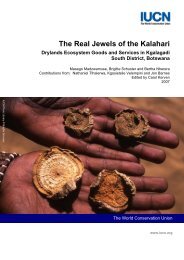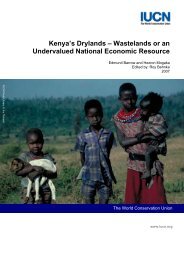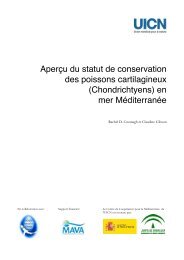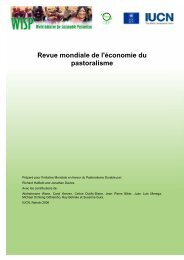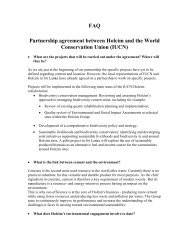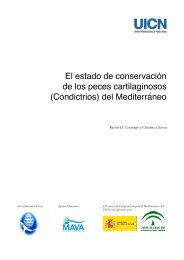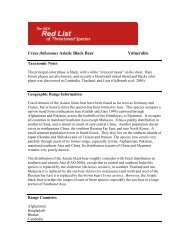iucn mediterranean sharks (pdf) - The Shark Trust
iucn mediterranean sharks (pdf) - The Shark Trust
iucn mediterranean sharks (pdf) - The Shark Trust
You also want an ePaper? Increase the reach of your titles
YUMPU automatically turns print PDFs into web optimized ePapers that Google loves.
5. International and regional instrumentsrelevant to the conservation andmanagement of MediterraneanchondrichthyansProtection currently granted to chondrichthyan fishspecies in the Mediterranean Sea under various regionaland international conventions is summarised in Table 5.1.Only two species; white shark Carcharodon carchariasand basking shark Cetorhinus maximus, are listed on theappendices of all four international conventions.<strong>The</strong> giant devilray Mobula mobular also receives someprotection, being listed on Appendix II of the Conventionon the Conservation of European Wildlife and NaturalHabitats (the Bern Convention) and on Annex II ‘List ofendangered or threatened species’, of the BarcelonaConvention. <strong>The</strong> Bern Convention listing rendersM. mobular a strictly protected species (see 5.2.1), andrequires that Parties endeavour to carry out appropriatemeasures with the aim of ensuring the species ismaintained in a favourable conservation state.A further five species (shortfin mako Isurus oxyrinchus,porbeagle Lamna nasus, blue shark Prionace glauca,angelshark Squatina squatina, and white skateRostroraja alba) are listed on Appendix III of the BernConvention and on Annex III of the Barcelona Convention.Figure 5.1 Numbers of regionally threatenedchondrichthyans (Critically Endangered,Endangered, Vulnerable) granted some form ofprotection within the Mediterranean.<strong>The</strong> Bern Convention Appendix III listing requires Partiesto protect these species, but a certain amount of exploitationis permitted if population levels allow (COE 2006). <strong>The</strong>Annex III listing on the Barcelona Convention alsorequires the exploitation of these species to be regulated(EUROPA 2006a).<strong>The</strong> numbers of threatened species (Critically Endangered,Endangered or Vulnerable) granted some form of protectedstatus in the Mediterranean Sea are presented in Figure 5.1.It is important to note how few of the threatened speciesare listed under relevant conventions. A total of 30 out of71 Mediterranean species (42%) were regionally assessedas threatened. Of these, just eight (27%) are granted someform of protection. This means 22 of the 30 threatenedspecies (over 73%) currently receive no form of protectionin the Mediterranean. Furthermore, only four of the 13(31%) Critically Endangered chondrichthyans are affordedany kind of protected status.5.1 Global instruments5.1.1 <strong>The</strong> Convention on the Conservation ofMigratory Species of Wild Animals (CMS orBonn Convention)CMS recognises the need for countries to cooperate in theconservation of animals that migrate across nationalboundaries, if an effective response to threats operatingthroughout a species’ range is to be made. <strong>The</strong> Conventionactively promotes concerted action by the Range Statesof species listed on its Appendices. CMS Parties shouldstrive towards strictly protecting the endangered specieson Appendix 1, conserving or restoring their habitat,mitigating obstacles to migration and controlling otherfactors that might endanger them (CMS 2006). <strong>The</strong>Range States of Appendix II species (migratory specieswith an unfavourable conservation status that need orwould significantly benefit from internationalcooperation) are encouraged to conclude global orregional Agreements for their conservation andmanagement (CMS 2006). <strong>The</strong> white shark and baskingshark are listed on Appendices I and II of the CMS. <strong>The</strong>19



